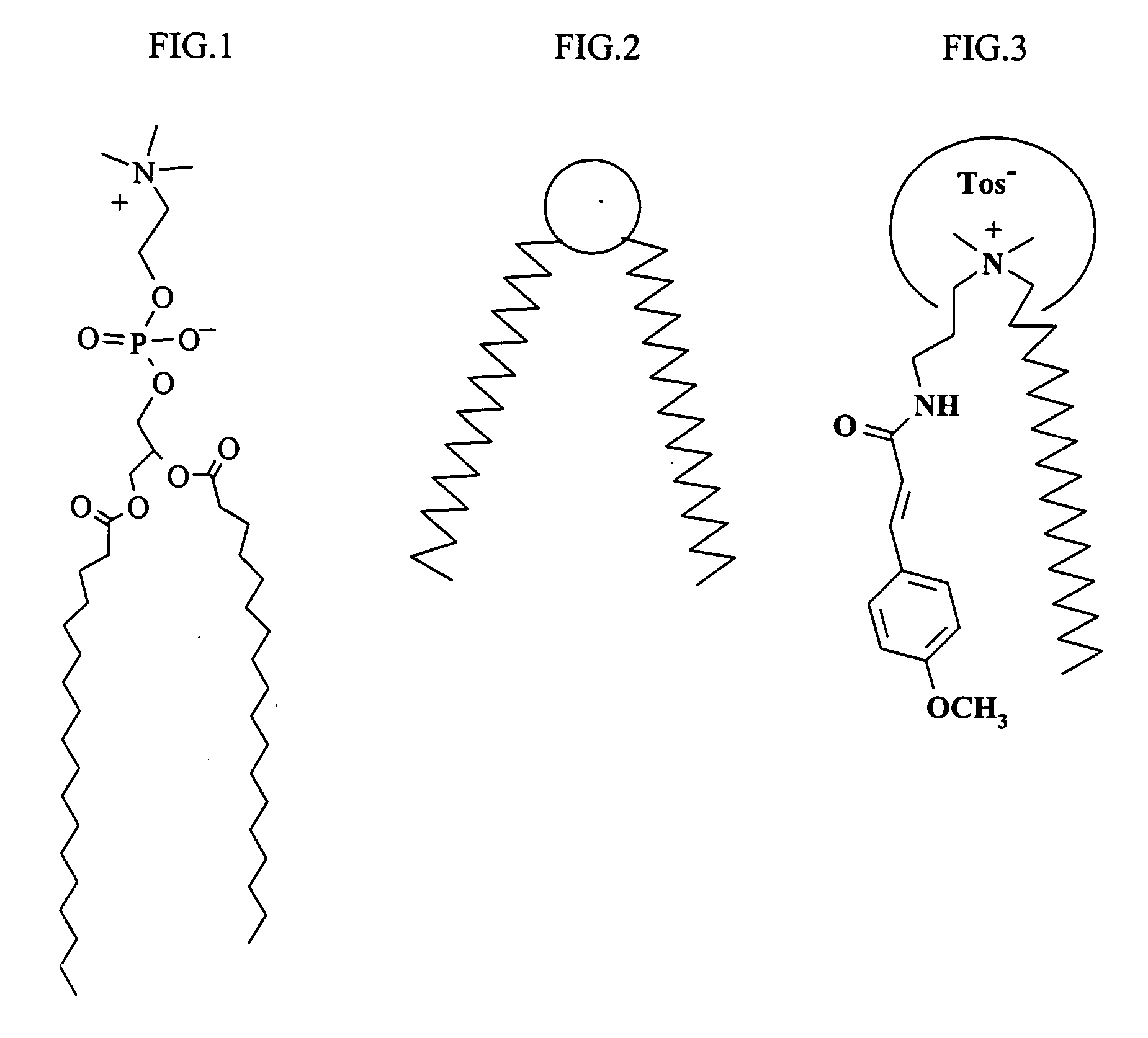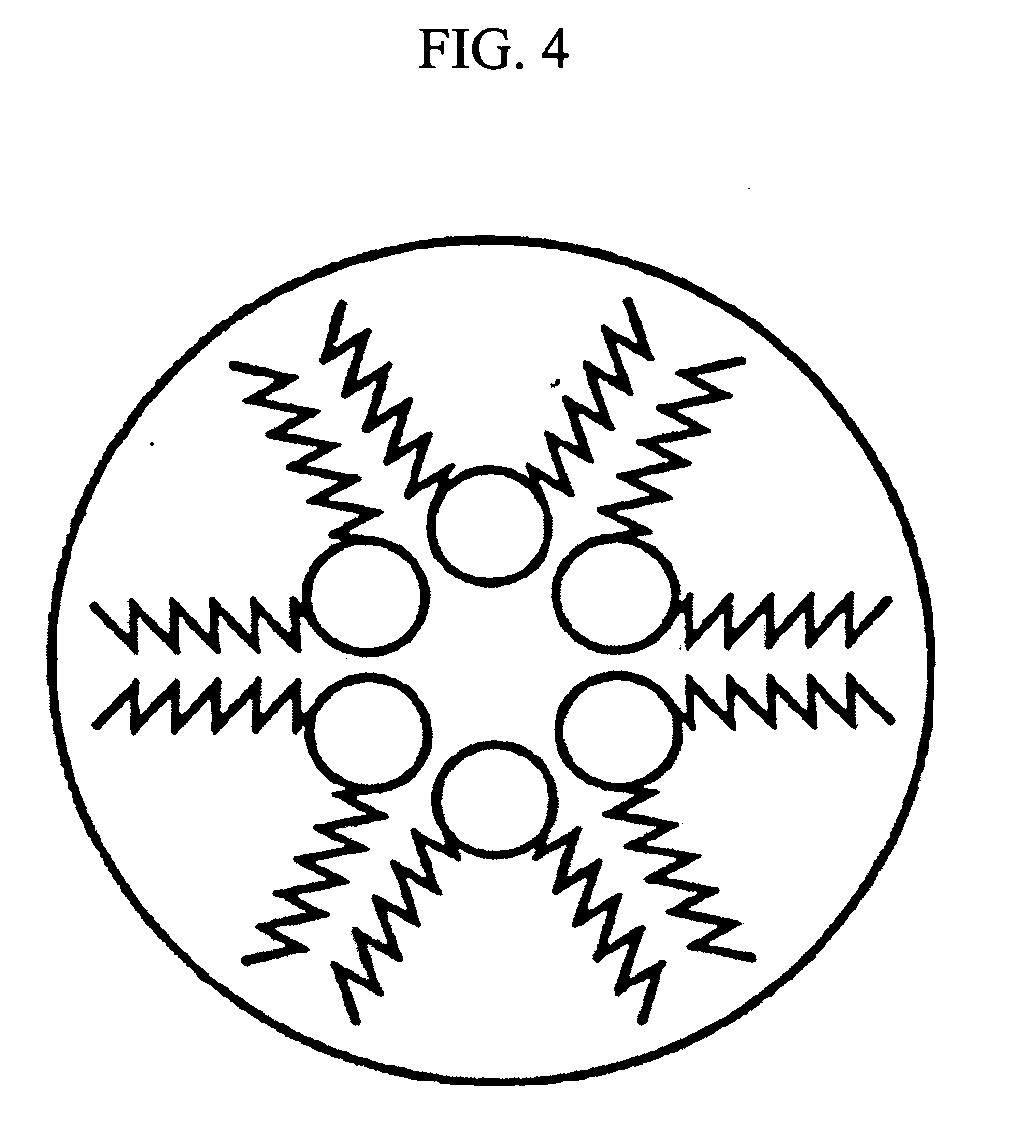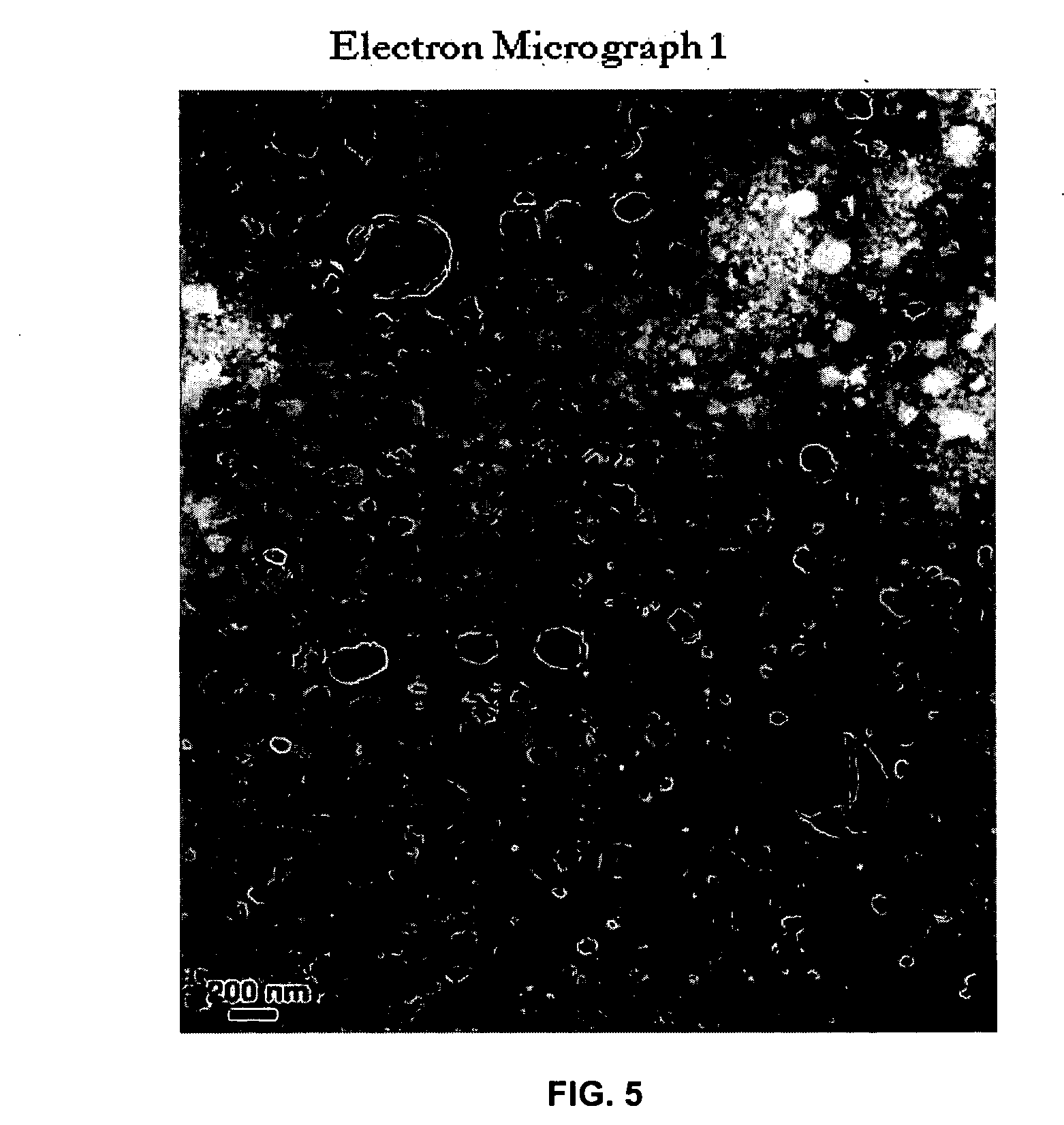UV-absorbing lipid vesicles
a lipid vesicles and uv-absorbing technology, applied in the field of vesicles, can solve the problems of skin damage, poor photoprotection effect, rough human hair, etc., and achieve the effect of low loading of organic sunscreens and enhanced photoprotection
- Summary
- Abstract
- Description
- Claims
- Application Information
AI Technical Summary
Benefits of technology
Problems solved by technology
Method used
Image
Examples
examples
[0034] The invention will now be illustrated with the help of examples. The examples are by way of illustrations only and in no way restrict the scope of invention. Many changes and modifications can be made within the scope of the present invention without departing from the spirit thereof and the invention includes all such modifications.
[0035]1H NMR spectra were recorded on Varian's 300 MHz instrument and IR Spectra were recorded on Perkin Elmer's FTIR Spectrum One instrument. HPLC analysis was performed on Varian's HPLC Prostar 240.
[0036] Homogenization of aqueous dispersion was performed on a high shear homogenizer from Ystral gmbh, Germany (Model 41 / G1)
[0037] TEM analysis was performed on Phillips Electron Microscope, Model CM200. Differential Scanning Calorimetry was performed on DuPont 2000 instrument.
[0038] The UV-absorbing cinnamidoalkyl and benzamidoalkyl ammonium tosylates were prepared as per the general procedure described in U.S. Pat. No. 6,613,340 (2003) and U.S....
example i
Preparation of liposomal dispersion of p-methoxy cinnamidopropyldimethylbehenyl ammonium tosylate of Formula I, wherein ArCO=p-methoxy cinnamoyl and R1=C22H45
A] Preparation of p-methoxy cinnamidopropyldimethylbehenyl ammonium tosylate
Preparation of p-methoxy cinnamidopropyldimethylbehenyl ammonium chloride
[0039] A solution of behenyl chloride (65.5 g, 190 mmol) and p-methoxy cinnamidopropyldimethyl amine (50.0 g, 190 mmol) in isopropanol (150 ml) was stirred under blanket of nitrogen at 130° C. for 12 hours. The progress of reaction was monitored by estimation of unquaternised amine. The chloride ion content and the unquaternised amidoamine were found to be 2.5% and 0.1% respectively. Distillation of isopropanol from the reaction mixture yielded the quaternary ammonium compound (115 g, 99%) as pale yellow solid.
Preparation of p-methoxy cinnamidopropyldimethylbehenyl ammonium tosylate
[0040] p-Methoxy cinnamidopropyldimethylbehenyl ammonium chloride (115 g, 190 mmol) was dissolve...
example ii
Preparation of liposomal dispersion of p-N,N-dimethylamine benzamidopropyldimethylbehenyl ammonium tosylate ArCO=p-N,N-dimethylamino benzoyl and R1=C2H45
A] Preparation of p-N,N-dimethylamine benzamidopropyldimethylbehenyl ammonium tosylate
[0048] It was prepared by reacting p-N,N-dimethylamino benzamidopropyldimethylamine, behenyl chloride and sodium p-toluene sulphonate according to literature procedure (U.S. Pat. No. 5,427,773 (1995).
Preparation of p-N,N-dimethylamino benzamidopropyldimethylbehenyl ammonium chloride
[0049] Behenyl chloride (14 g, 40 mmol) and p-N,N-dimethylamino benzamidopropyldimethylamine (10.0 g, 40 mmol) was stirred under blanket of nitrogen at 150° C. for 15 hours. The progress of reaction was monitored by estimation of unquaternised amine. At the end of the reaction, chloride ion and free amidoamine was found to be 5.9% and 0.3% respectively. The reaction yielded the quaternary ammonium compound (23.0 g, 96%) as pale yellow solid.
b) Preparation of p-N,N-d...
PUM
| Property | Measurement | Unit |
|---|---|---|
| diameter | aaaaa | aaaaa |
| size | aaaaa | aaaaa |
| diameter | aaaaa | aaaaa |
Abstract
Description
Claims
Application Information
 Login to View More
Login to View More - R&D
- Intellectual Property
- Life Sciences
- Materials
- Tech Scout
- Unparalleled Data Quality
- Higher Quality Content
- 60% Fewer Hallucinations
Browse by: Latest US Patents, China's latest patents, Technical Efficacy Thesaurus, Application Domain, Technology Topic, Popular Technical Reports.
© 2025 PatSnap. All rights reserved.Legal|Privacy policy|Modern Slavery Act Transparency Statement|Sitemap|About US| Contact US: help@patsnap.com



